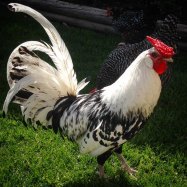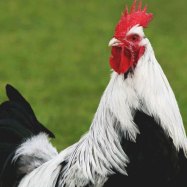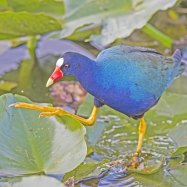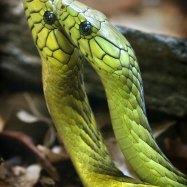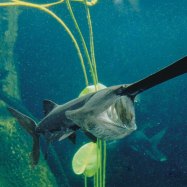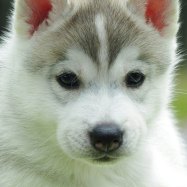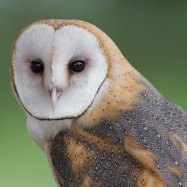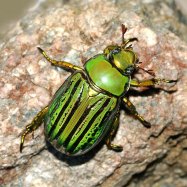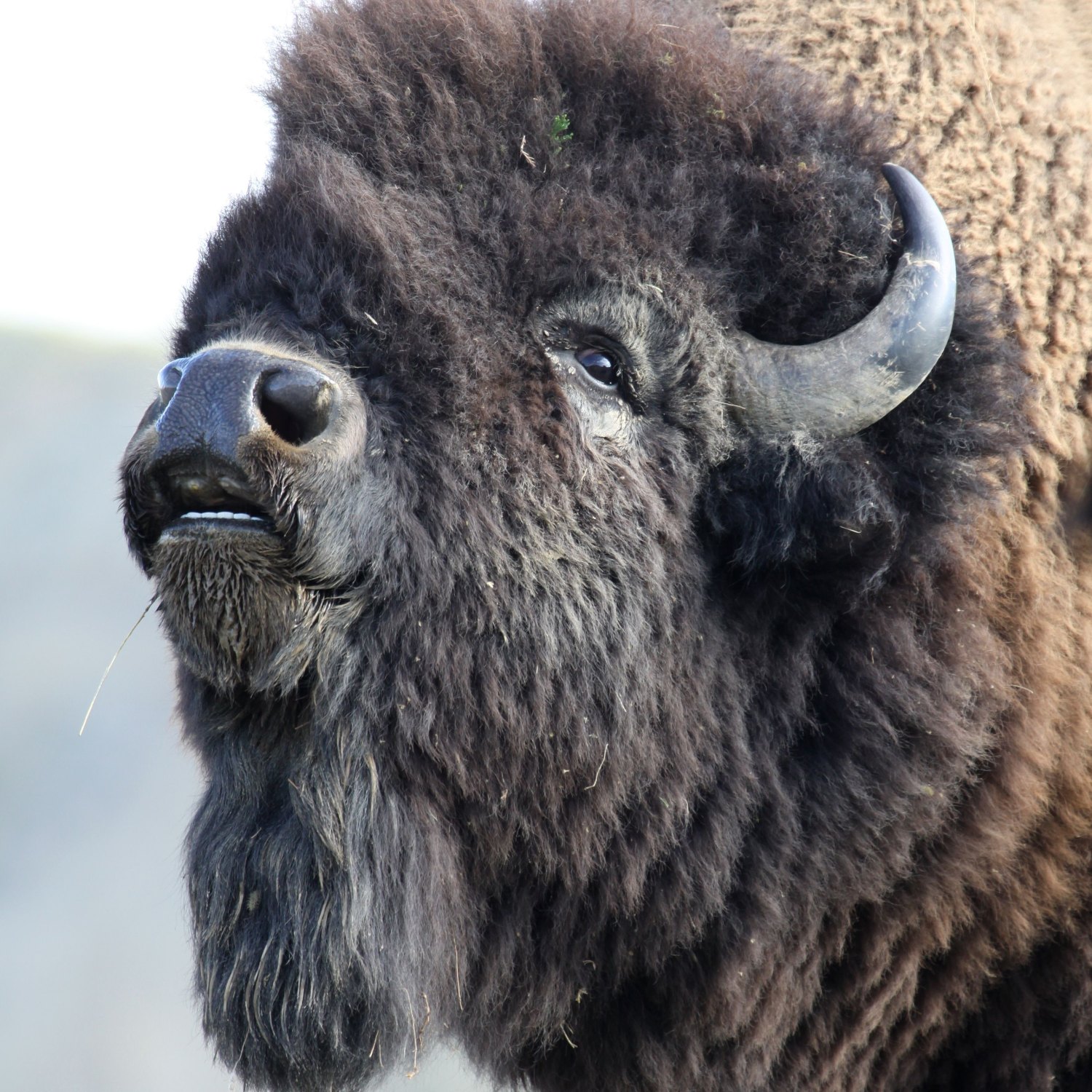
Bison
2.4 - 3.5 meters
Learn more about the magnificent bison, found in wide ranges across North America. These majestic animals, belonging to the Bovidae family, can reach lengths of 2.4-3.5 meters. With their large and robust body shape, they are well-adapted to survive in their natural habitat. Discover the beauty of these fascinating creatures today! #Bison #NorthAmerica #Wildlife
Animal Details Summary:
Common Name: Bison
Kingdom: Animalia
Habitat: Grasslands, prairies, and forests
The Mighty Bison: A Symbol of the American West
The American West is a region rich in history, culture, and natural landscapes. One animal that has come to represent this unique part of the world is the mighty bison. With its iconic appearance and significant role in the ecosystem and American history, the bison is a species that deserves to be celebrated and protected.The Basics of the Mighty Bison
Scientifically known as Bison bison, the bison is a large mammal that belongs to the kingdom Animalia, phylum Chordata, class Mammalia, order Artiodactyla, and family Bovidae Bison. Its common name, bison, is derived from the Latin word "bisonte," meaning a wild ox. It is often interchangeable with the term buffalo, but technically, bison and buffalo are different species.Bison has a widespread geographical distribution, primarily found in North America. However, due to human expansion and habitat destruction, their population has significantly decreased, and they are now only found in protected areas. The United States and Canada are the two countries that are home to a significant number of bison herds.
Their preferred habitat includes grasslands, prairies, and forests, where they can graze on a variety of vegetation. As herbivores, their diet consists of grasses, sedges, herbs, and shrubs. They are not picky eaters and will consume whatever is available in their habitat.
Appearance and Physical Characteristics
The bison is a truly remarkable animal to behold Bilby. They have a distinct, muscular appearance with a large and robust body shape. They can reach a length of 2.4 to 3.5 meters and weigh between 400 to 1,000 kilograms, making them one of the largest land mammals in North America.One of the most striking features of bison is their dark brown to black coloration, often with a shaggy coat that protects them from harsh weather conditions. The hair on their head and shoulders often grows longer, giving them a hump-like appearance. Both males and females have horns, with those of males being larger and more curved.
The Importance of the Bison in North America
For centuries, bison have played a vital role in the ecosystem of North America. As grazers, they have helped maintain the balance of grassland ecosystems by keeping the vegetation in check. They also have the ability to dig through snow and break through ice, making it easier for other animals to access food and water during winter.Moreover, bison have a symbiotic relationship with other species, such as birds and insects, who often feed on parasites and insects found on the bison's body. They also serve as a food source for predators such as wolves and bears, contributing to the overall health of the ecosystem.
Aside from their ecological importance, bison also hold significant cultural and historical significance in North America. They have been an integral part of the lives of Native American tribes, who relied on them for food, clothing, and other resources. Bison also played a crucial role in the cultural and spiritual beliefs of these tribes.
Furthermore, bison hunting was a way of life for many indigenous peoples and later became a booming industry for European settlers in the 19th century. Sadly, due to overhunting and habitat destruction, bison numbers drastically declined, leading to its near extinction. However, conservation efforts have helped revive the bison population, and they are now considered a protected species.
The Fascinating Behavior of Bison
Bison are social animals and form herds, often led by a dominant male, called a "bull." The herd is usually made up of females, called "cows," and their offspring. While they are generally docile and peaceful, bison can also become aggressive when threatened or during the mating season.Their mating season typically occurs in late July to early September, where males compete for female attention by displaying their strength and dominance. Once pregnant, females will give birth after a gestation period of nine months, often producing a single calf. The calf will stay close to its mother for protection and will continue to nurse for up to a year.
During the winter months, bison migrate to lower elevations in search of food, but they can also remain in their home range if food is available. In the spring, they will return to higher elevations, where they can find fresh, lush vegetation.
The Importance of Protecting the Bison
The bison's population has come a long way from its near extinction in the 19th century. Thanks to conservation efforts, their numbers have increased, and they are no longer considered endangered. However, they still face threats, such as habitat loss due to land development and competition with livestock for resources.It is essential to continue protecting and preserving the bison for future generations to come. This includes preserving their habitat, managing their population, and promoting public education about their importance and cultural significance. Sustainable hunting and ranching practices can also help ensure the survival of this iconic species.
In Conclusion
The mighty bison is more than just a large, majestic animal. It is a symbol of the American West, with a rich cultural and ecological history. Through conservation efforts, we can continue to protect and appreciate this iconic species for many years to come. So the next time you see a bison roaming in its natural habitat, remember to admire its beauty and significance.

Bison
Animal Details Bison - Scientific Name: Bison bison
- Category: Animals B
- Scientific Name: Bison bison
- Common Name: Bison
- Kingdom: Animalia
- Phylum: Chordata
- Class: Mammalia
- Order: Artiodactyla
- Family: Bovidae
- Habitat: Grasslands, prairies, and forests
- Feeding Method: Herbivorous
- Geographical Distribution: North America
- Country of Origin: United States and Canada
- Location: Wide range across North America
- Animal Coloration: Dark brown to black
- Body Shape: Large and robust
- Length: 2.4 - 3.5 meters
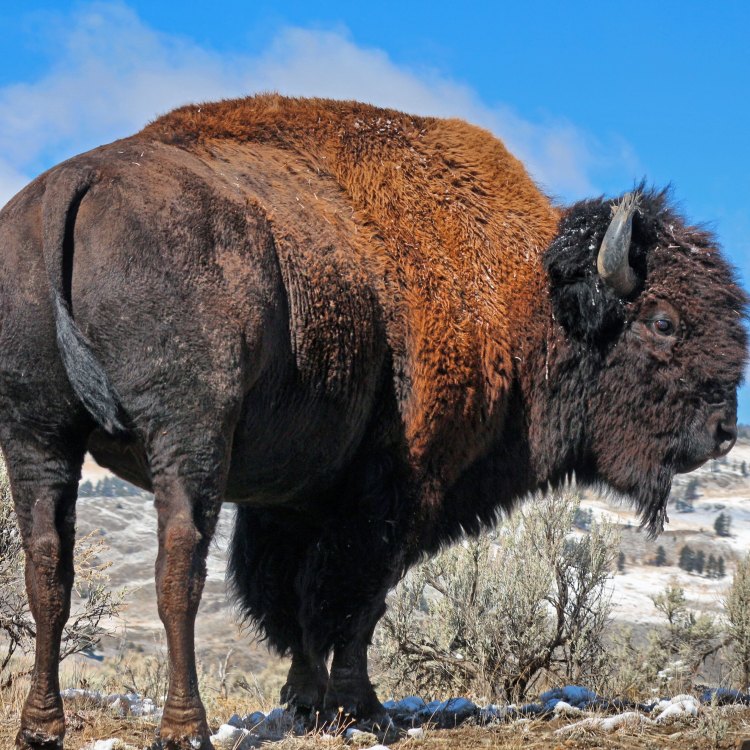
Bison
- Adult Size: 1.8 - 2 meters (shoulder height)
- Average Lifespan: 20 - 25 years
- Reproduction: Sexual
- Reproductive Behavior: Polygamous
- Sound or Call: Loud grunts, roars, and bellows
- Migration Pattern: Nomadic
- Social Groups: Groups called herds or bands
- Behavior: Herbivorous grazers, wallowers
- Threats: Habitat loss, hunting
- Conservation Status: Near Threatened
- Impact on Ecosystem: Ecological engineers
- Human Use: Meat, hides, fur
- Distinctive Features: Large hump on shoulders, curved horns
- Interesting Facts: National Mammal of the United States, can reach speeds up to 35 mph
- Predator: Historically, wolves and grizzly bears
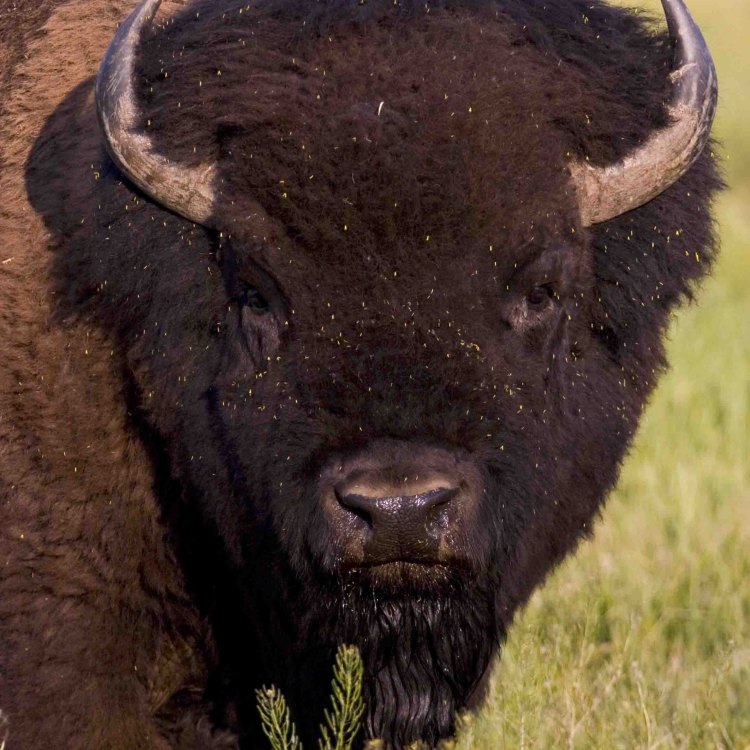
Bison bison
The Mighty Bison: America's National Mammal and Ecological Engineer
The American bison, more commonly known as the American buffalo, is undeniably one of the most iconic and important species in North America. With its massive size, distinctive features, and fascinating behavior, these majestic creatures have captured the hearts of many and play a vital role in the ecosystem. In fact, they were recently declared as the National Mammal of the United States. Join me as we dive deeper into the world of bison and explore their unique features and impact on the environment PeaceOfAnimals.Com.Adult Size and Average Lifespan
The first thing that comes to mind when we think of bison is their impressive size. Standing at a height of 1.8 to 2 meters at the shoulder, these massive animals can weigh up to 2,000 pounds! In fact, they are one of the largest land animals in North America, second only to moose. The males, also known as bulls, are usually larger than the females, or cows.
On average, bison have a lifespan of 20 to 25 years in the wild. However, some bison in captivity have been known to live up to 35 years. These resilient animals are well adapted to harsh weather conditions, making them able to survive in the wild for long periods.
Reproductive Behavior
Bison are polygamous animals, meaning they have more than one sexual partner during mating season. The breeding season typically occurs in late summer, but bison can reproduce year-round Black Bass. Dominant males will gather female cows into a harem for mating, while younger bulls roam in bachelor herds. Once a cow gives birth, the new calf will join a herd where they are protected and nurtured by the females.
Sound or Call
Bison are known for their loud grunts, roars, and bellows, making them one of the noisiest animals in North America. These sounds are used for communication and can be heard up to several miles away. Cows and their offspring have a unique call, allowing them to identify and locate each other in large herds.
Migration Pattern and Social Groups
Bison are nomadic animals, known to roam great distances in search of food and water. They follow a seasonal migration pattern, moving from higher elevations in the summer to lower valleys in the winter. Herders have observed that bison tend to prefer open spaces and avoid wooded areas.
Bison live in social groups called herds or bands, which can vary in size from a few individuals to hundreds. The herd is led by a dominant male, who is responsible for protecting the females and young calves from predators.
Behavior and Diet
Bison are herbivorous grazers, meaning they mainly eat grasses and sedges. Their stomachs have four chambers, allowing them to digest tough and coarse vegetation. These large animals can eat up to 30 pounds of food per day and spend most of their time grazing. They also have a unique behavior of wallowing, where they roll in dust, mud, or water, to keep their skin healthy and free from parasites.
Threats and Conservation Status
Unfortunately, the American bison has faced many threats over the years. Habitat loss due to human development and hunting for their meat, hides, and fur have significantly impacted their population. In the 19th century, bison were nearly driven to extinction, with only a few hundred remaining in the wild.
Thankfully, conservation efforts have helped to increase the bison population to over 500,000 today. However, their conservation status is still listed as Near Threatened by the International Union for Conservation of Nature (IUCN). Continued efforts are needed to protect their natural habitat and prevent poaching.
Impact on Ecosystem
Bison are not only important for their cultural significance, but they also play a vital role in the ecosystem. These large herbivores are known as ecological engineers, meaning they physically alter their environment through their activities. By grazing on grasses and creating wallows, they help to maintain a healthy and diverse ecosystem. Their hoofprints also help to create small depressions in the ground, providing water and food for smaller animals.
Human Use and Distinctive Features
Since ancient times, bison have been an integral part of Native American culture, providing meat, hides, and fur for clothing, shelter, and other products. Today, they are raised on ranches for their meat and produce high-quality lean protein. Bison are also used for conservation purposes, as their grazing behavior helps to improve the health of grasslands. Their distinctive features, such as their large hump on their shoulders and curved horns, make them easily identifiable and highly revered animals.
Interesting Facts and Predator
Here are some interesting facts about bison that you may not know:
- The American bison is not actually a buffalo. Though they are often called buffalo, they are more closely related to cows and goats.
- The bison is the National Mammal of the United States, representing the country's cultural and ecological heritage.
- Bison can reach impressive speeds of up to 35 miles per hour, making them one of the fastest land animals in North America.
- Historically, bison had two main predators – wolves and grizzly bears. However, due to their large size and powerful defense mechanisms, such as their horns and speed, bison are often able to fend off these predators.
In Conclusion
The American bison is an incredible and resilient animal that has captured the hearts of many. From their impressive size and distinctive features to their unique behaviors and important role in the ecosystem, bison are truly fascinating creatures. It is our responsibility to protect and preserve them for future generations to appreciate and admire. Let us all do our part in ensuring the continued existence of these amazing animals.
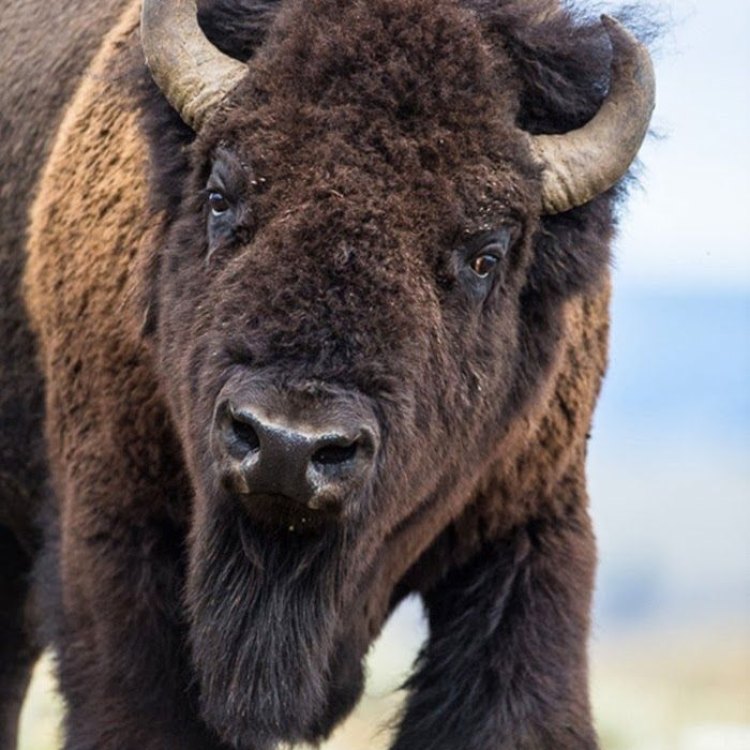
The Mighty Bison: A Symbol of the American West
Disclaimer: The content provided is for informational purposes only. We cannot guarantee the accuracy of the information on this page 100%. All information provided here may change without prior notice.



